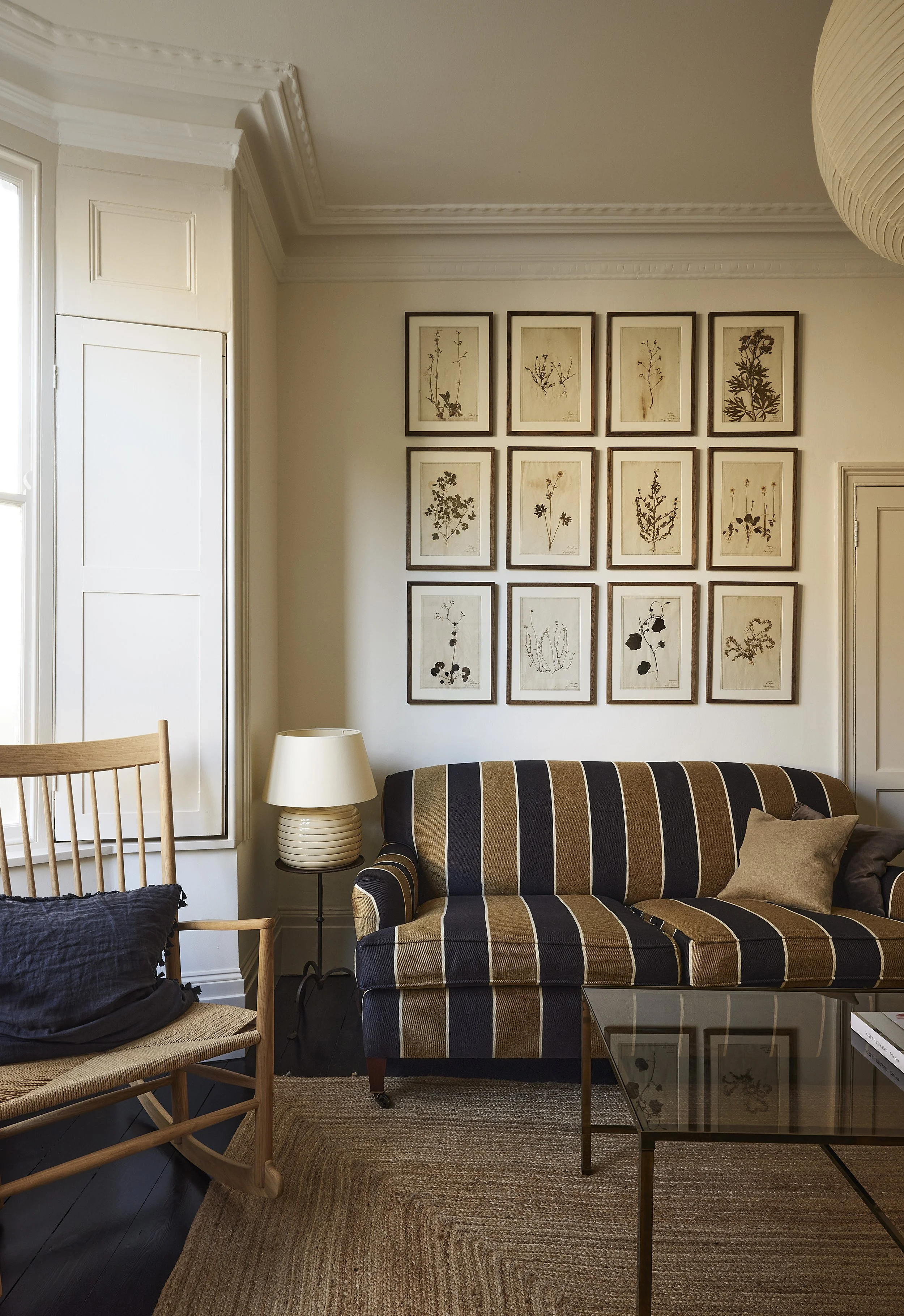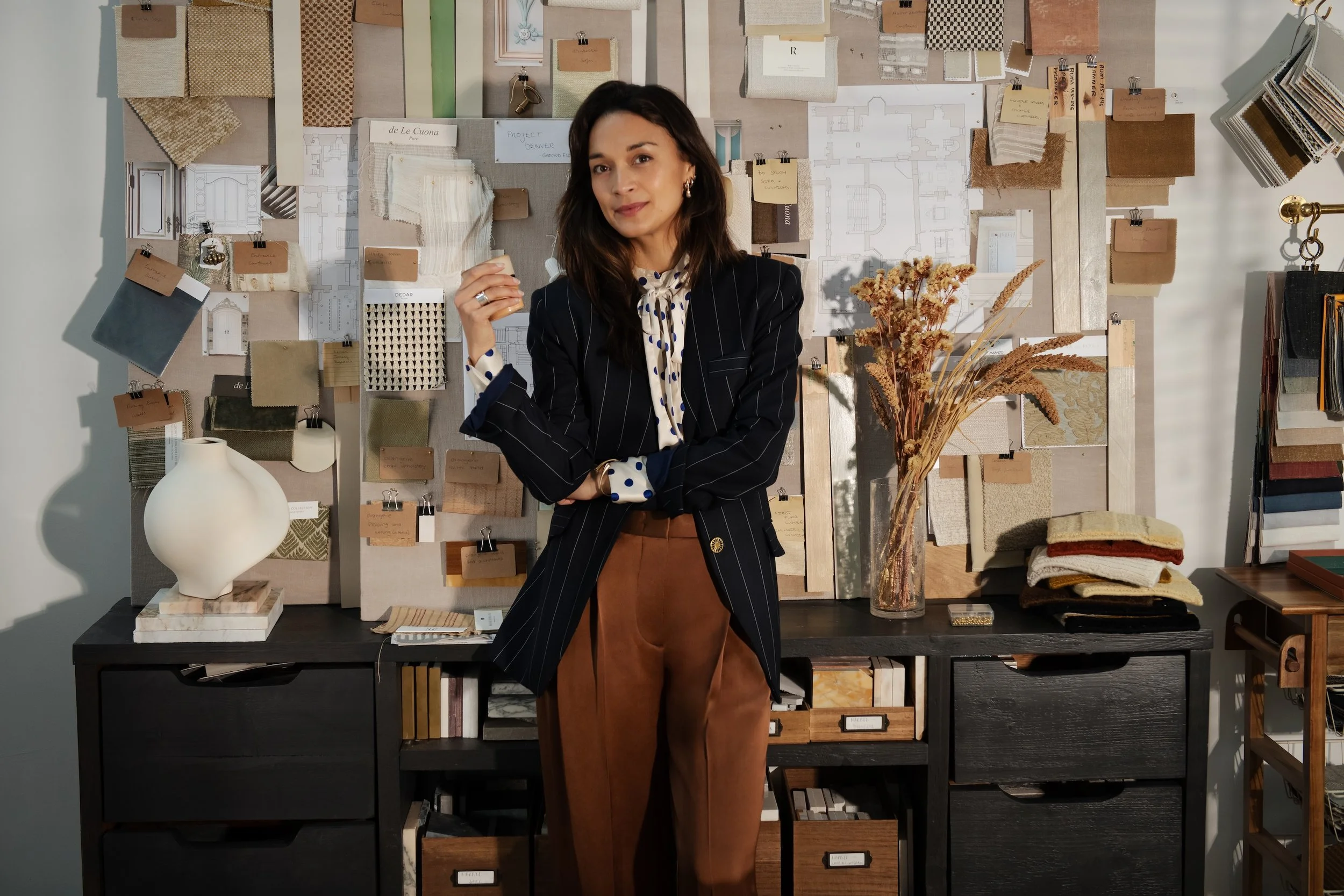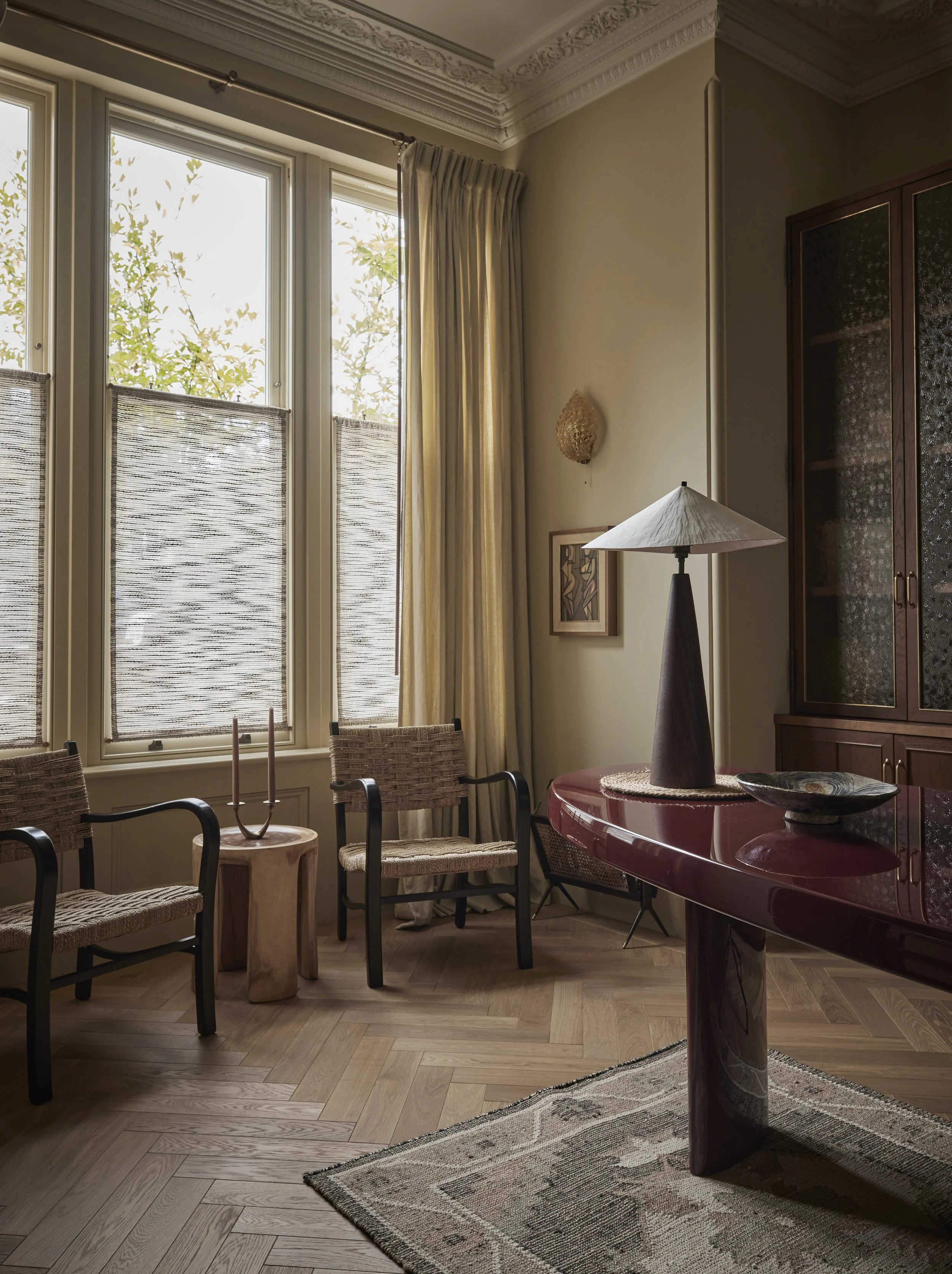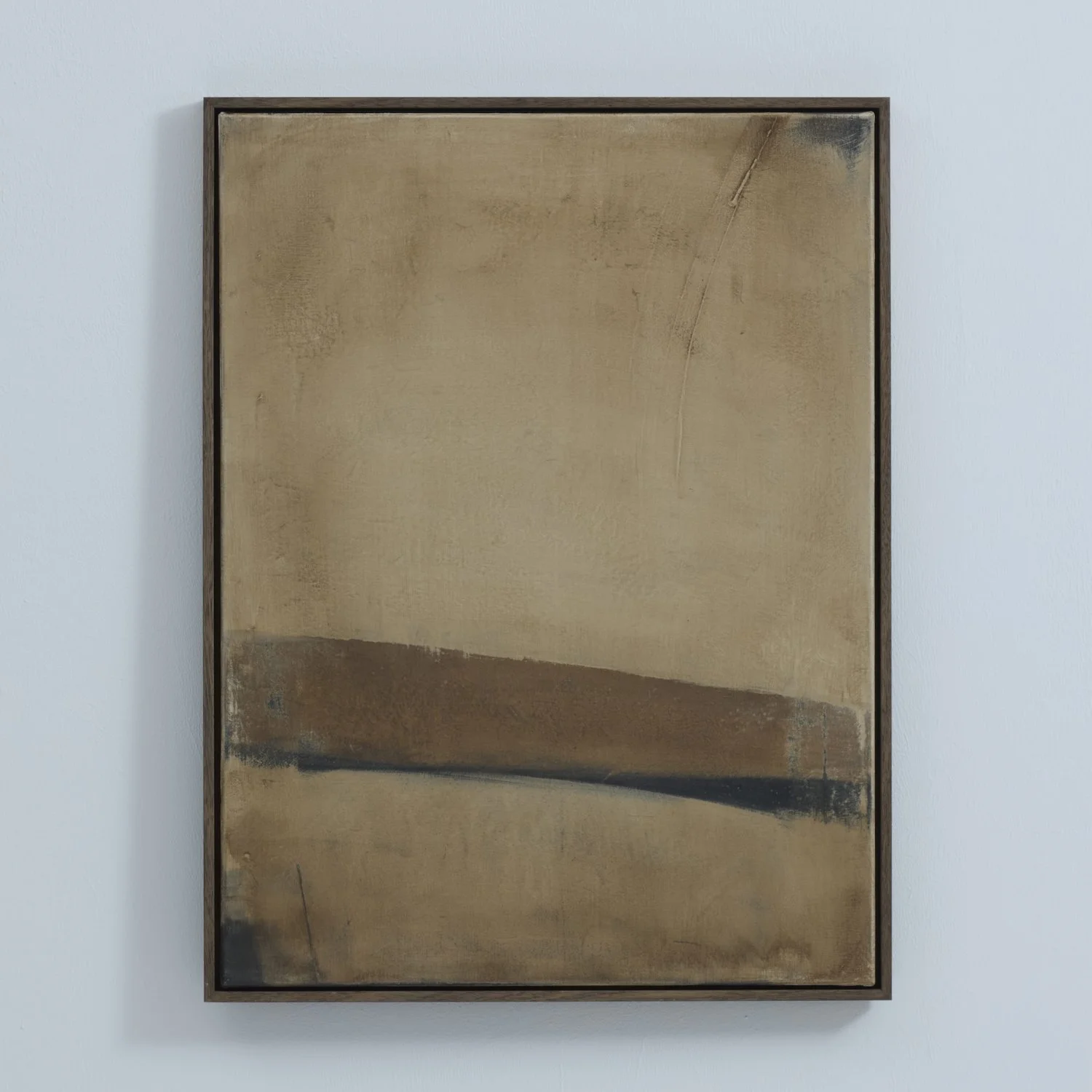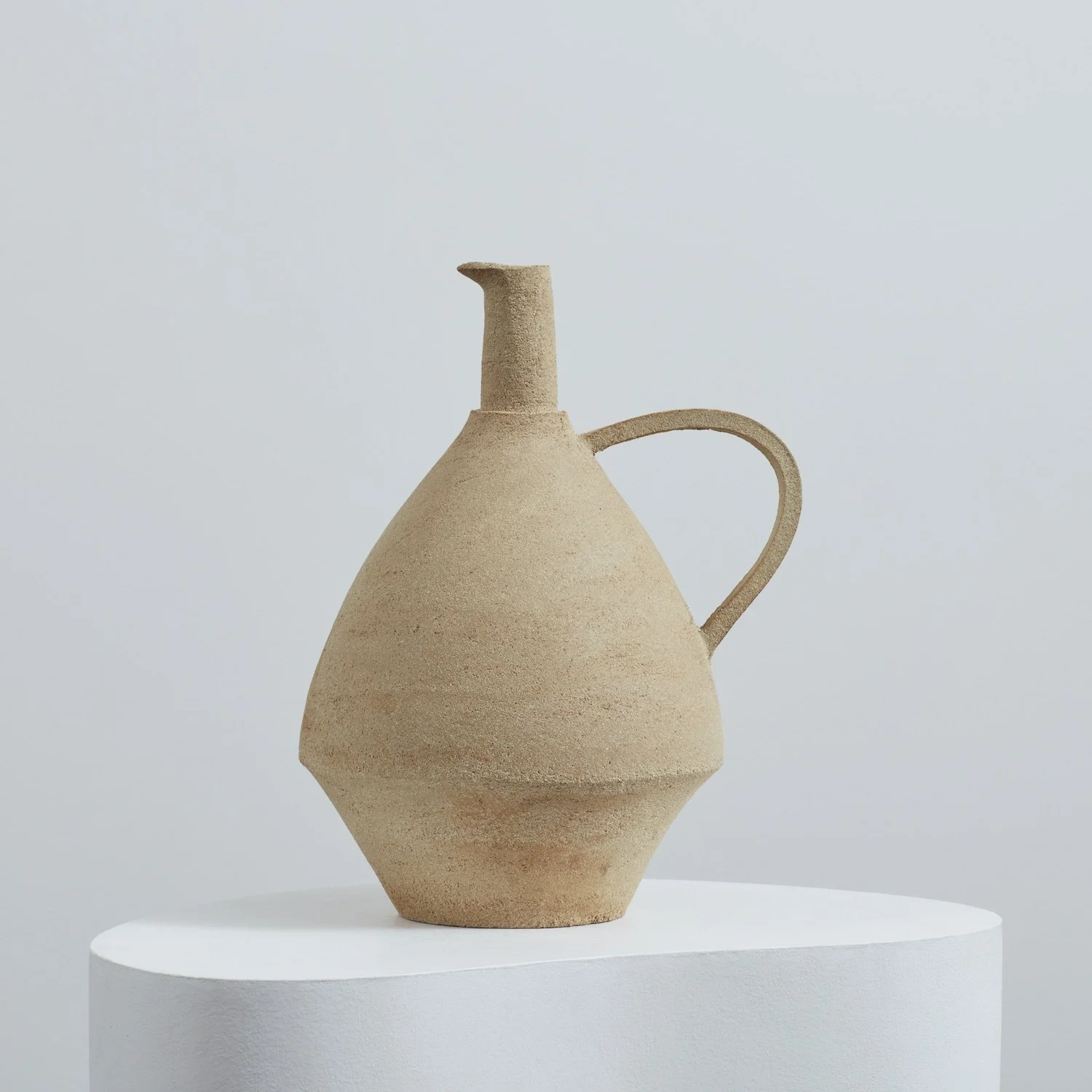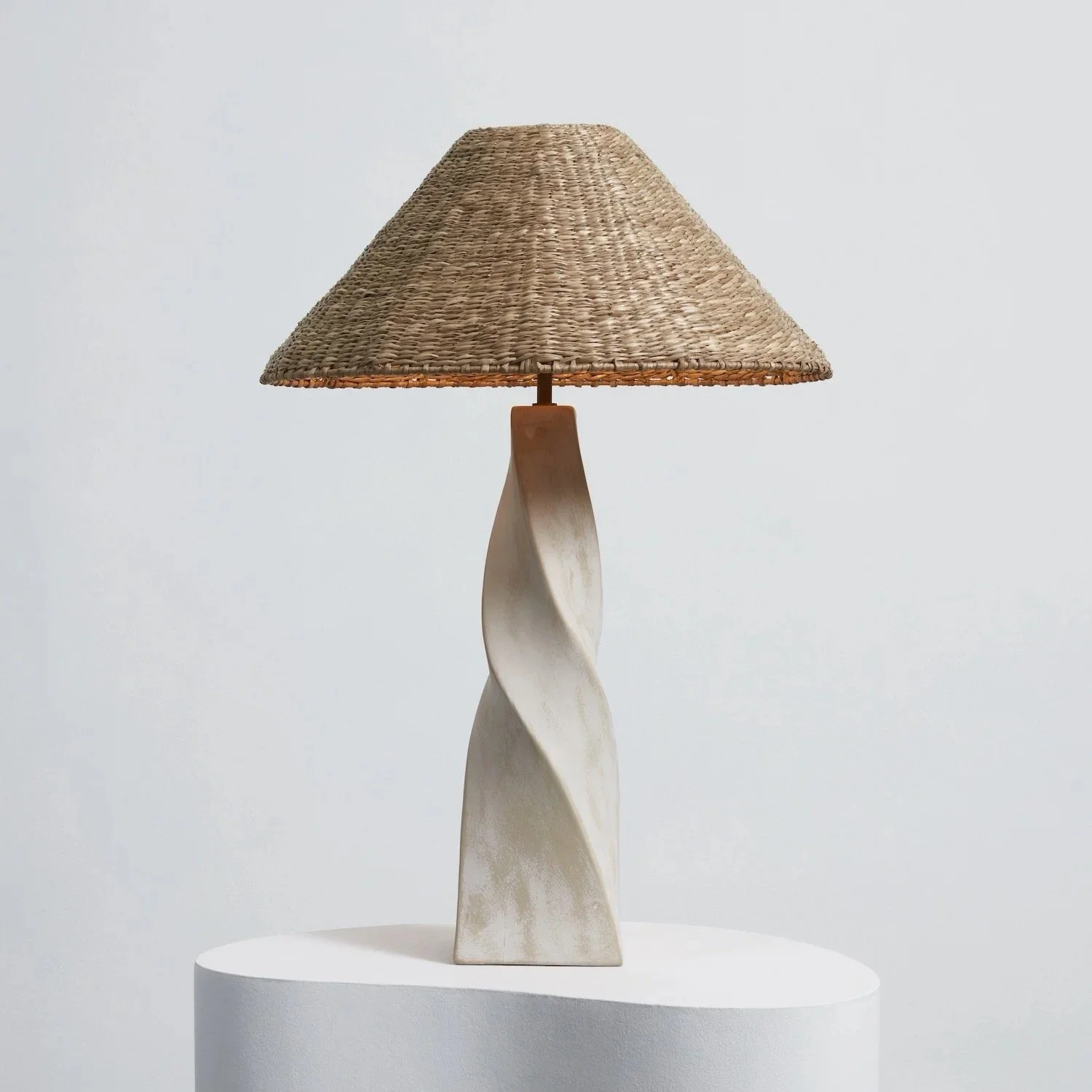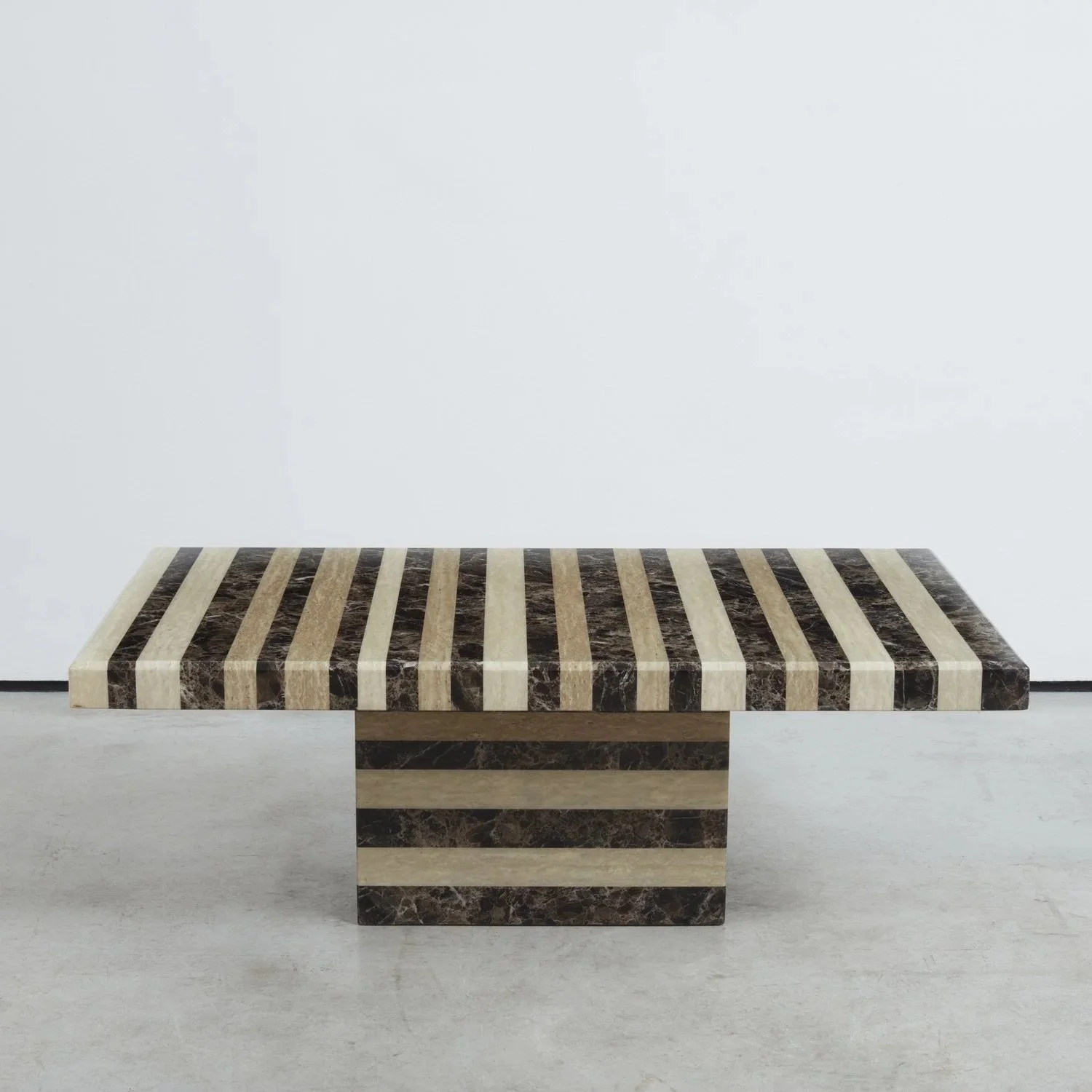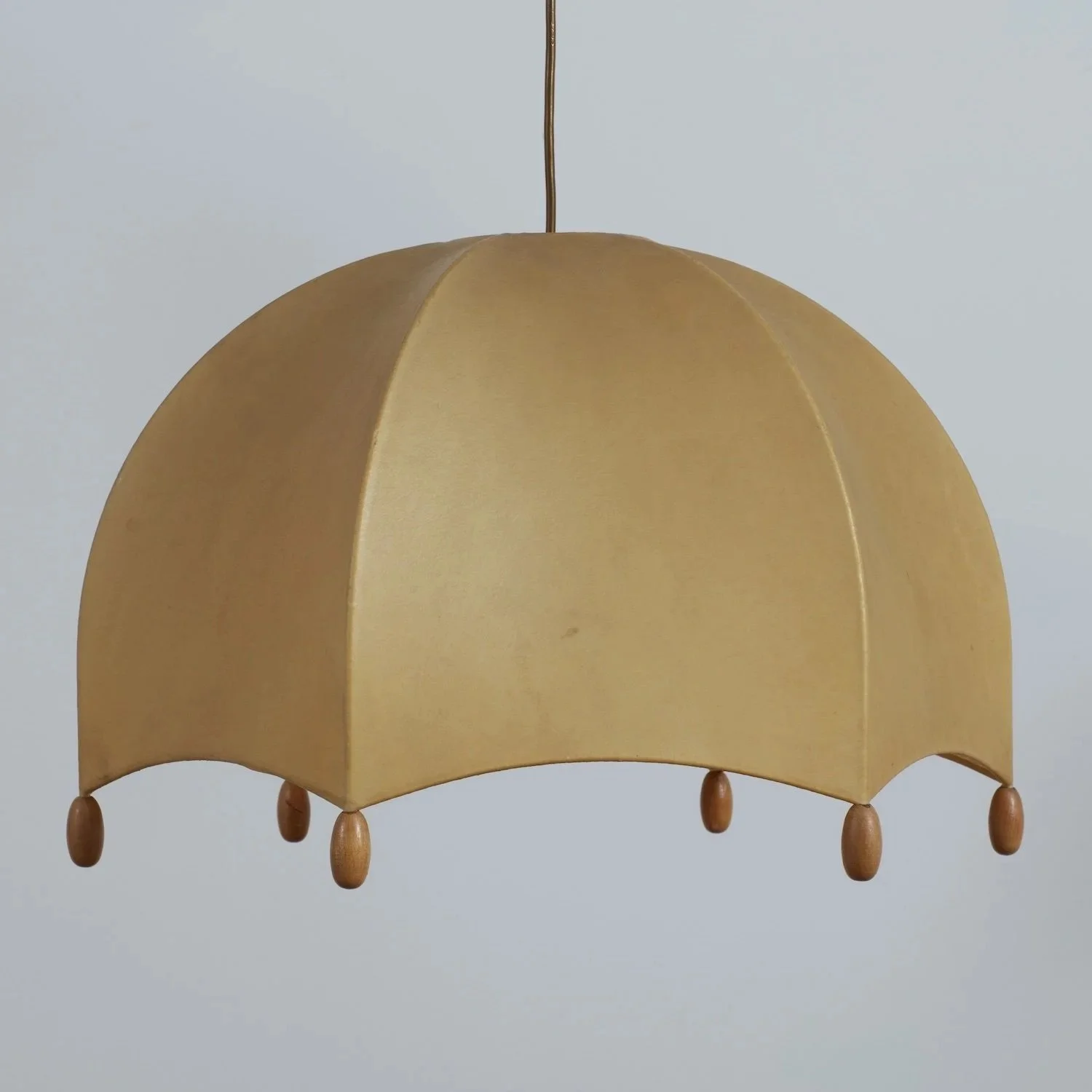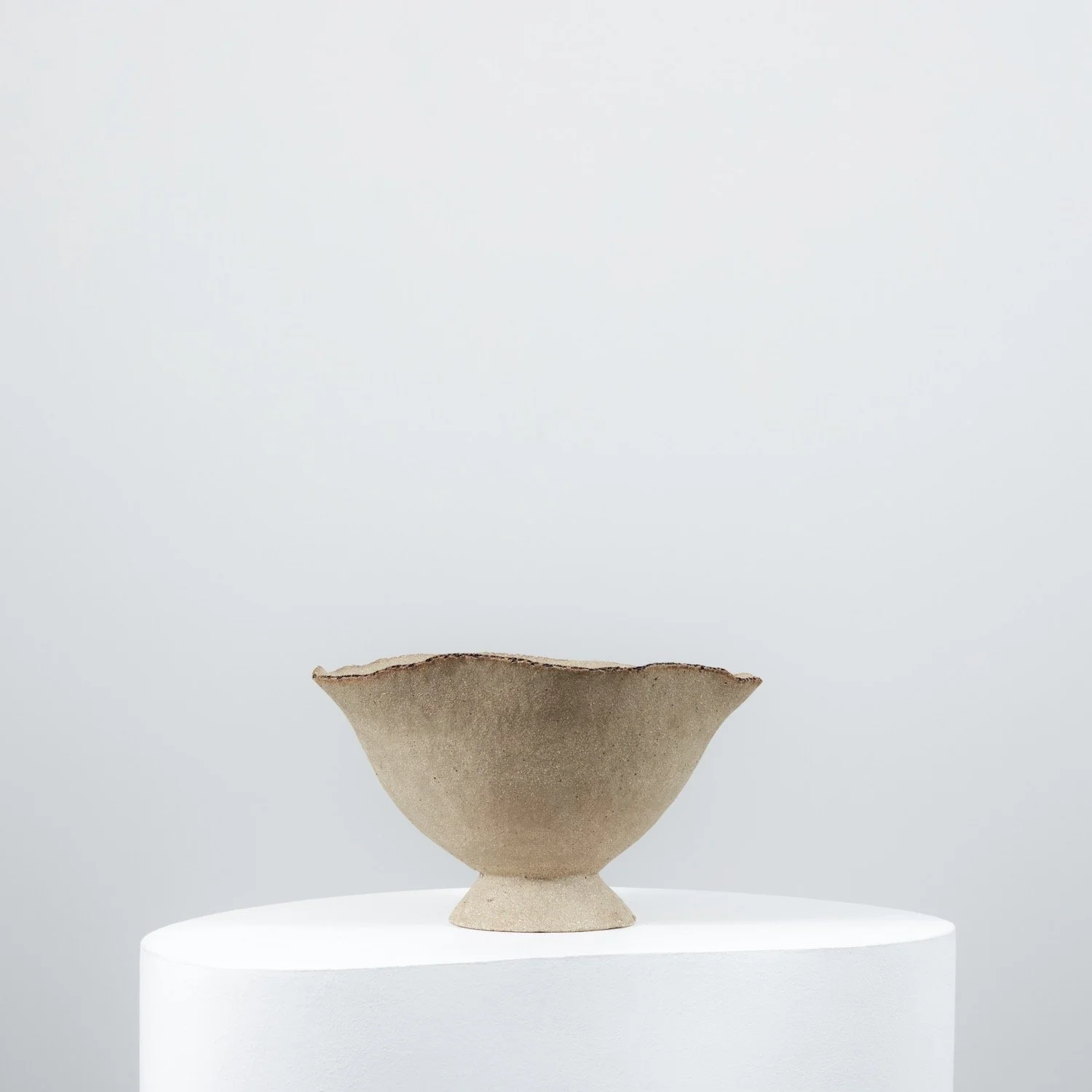PERNILLE LIND
Founder and Design Director of PERNILLE LIND STUDIO, LIND + ALMOND & HYEM
With roots in Denmark and Thailand, Pernille Lind is the creative force behind some of London’s most elegant interiors. Drawing on years of experience in luxury hospitality and residential design across Europe, Asia, and North America, her work blends warm minimalism, layered textures, and a touch of vintage soul. The result? Spaces that are timeless, tactile, and deeply considered.
Can you tell us about your background and what inspired you to pursue a career in interior design?
I have been fortunate to travel and live in several countries since childhood. My father, an engineer, was seconded to various locations for work. I spent the first four years in Saudi Arabia, then later moved to Bangkok, where my mother is from. I also lived in Denmark, my father's homeland. By the age of ten, I had been exposed to a rich variety of cultures and experiences.
The main inspiration from these travels that has significantly influenced my career today was the grand hotels we would stay in or visit in Bangkok. The city has always been at the forefront of excellent hospitality, and with its rapid expansion, new modern buildings with grand spaces were emerging in the 1990s. As a young girl in these spaces, the scale and volume were quite breathtaking. I only made the connection later in life, when I pursued studies in interior design and developed a desire to create hospitality spaces that could evoke the same memories I hold from those childhood experiences.
My interest in residential interior design comes from a more innate desire to curate and create comfortable, welcoming homes. This was nurtured by my family environment, where I often redecorated or reorganised the house. My father was very patient and supportive whenever I approached him, saying, "I think the dining room isn’t looking quite right at the moment. There are too many things; can I please reorganise and change it?" I would do the same with the living room and my own bedroom, which had for some years, a very strong concept of bubblegum pink everywhere!
How do you begin designing a space from scratch? Do you start with a feeling, a material, or a story?
I would say I start with all of the above. How I perceive the house and spaces during my initial visit, the natural light, layout, and architectural details, are the foundation that I work from. These elements are crucial to consider during the design development. The story then emerges from my clients, their identities, what home means for them, the functions they require, and how they utilise the spaces as a family.
Materiality is a key aspect in defining the design; it forms a vital part of the sensory experience of any interior. These elements need to feel great and look inviting, ensuring the space is both beautiful and functional.
What’s been the biggest lesson since starting your own studio?
The journey of having to be much more than ‘just a designer’ and the amount of self-directed learning of new skills, especially within management, basic business development, and finances, was not something I had considered as part of the role when I set up. Learning how to manage these aspects whilst also remaining creative and passionate about what I do has been a challenging balance. Fortunately, I have my partner Richy, whom I can lean on and spar with, along with some close friends who also run their own businesses. I’ve also learned that hiring self-driven and talented designers makes my job significantly easier and is key to the success of the business; therefore, recruiting well and the time spent on this is yet another skill to add to the ever-evolving set of traits needed when running a business.
What’s one object in your home that holds an emotional or unexpected story?
I have inherited a lot of art and objects from both of my parents, which I display either in my home here in London or my summer house in Denmark. A pair of artworks I have here in London is from my childhood home. They used to hang on either side of our fireplace, and my dad has taped newspaper clippings of articles to the back of the frames, which he has found about the artist, dating back to the 1990s and early 2000s.
If your design style were a personality, how would you describe it at a dinner party?
It would be the introvert who allows their extrovert side to come out, especially if around close friends. This would look like a base outfit of colour matching or tone-on-tone clothing, mixed with an overload of earrings (I have a few ear piercings) and finger rings - maybe a subtle red lip, if I’m feeling more extroverted that day and don’t mind the attention. Combined with a more daring coat or blazer, which might add more colour than my main outfit. My handbag would be small yet practical, I need my phone (which is just too big), keys (I have too many), lip balm, wallet and mini measuring tape, I also prefer a cross shoulder bag, or I will just leave it somewhere and forget. Lastly, you probably won’t see me in high heels, possibly kitten heels, but comfort these days takes precedence.
What was the initial spark that led you and Rich Almond to co-found Lind + Almond?
When we were appointed to design Hotel Sanders in Copenhagen, both of us were working full time at other studios, Richy as an architect and I as an interior designer. We had discussed that we were looking to move away from being employed and work independently, and as the universe works, we then had this amazing opportunity land on our laps, and we couldn’t say no, so we went for it and therefore set up LIND + ALMOND in 2015.
You work with rich textures and quiet luxury, what’s the secret to making a space feel indulgent without being loud?
I don't use a lot of saturated colours or bold patterns in my interiors, which results in the spaces not feeling loud. I believe homes evoke a greater sense of calm when the senses aren't overwhelmed by an unbalanced mix of patterns and colours. I admire designers who can successfully create balanced interiors using colour and pattern; however, this approach doesn't come naturally to me. I have a more minimalistic philosophy, and I tend to adopt this mindset if I am uncertain and need to distil my ideas down to something I feel confirmable with. By removing elements, I believe you give other features space to breathe, and it is perfectly acceptable to have untouched or bare areas. However, my home is becoming a bit of the opposite of this ethos at the moment, because I love to collect things and fill most shelves and walls with art and objects!
What does a typical day look like for you?
As a business owner, design has become one of many tasks I undertake within a day. My weeks are very varied, but predominantly I focus my time on developing the design direction for our projects with my team and mentoring them in a way that ensures we deliver results true to my ethos and approach to design. I also strive to foster personable and close relationships with my clients; however, I also encourage my project designers to connect directly with our clients, as I believe this is important, and I may not always be the primary point of contact for all projects at all times.
Additionally, my role involves taking on aspects such as HR, finance management, studio administration, and PR and marketing. Although we do have some dedicated team members in these roles, I am involved in everything relevant to the day-to-day running of my businesses.
Hand sketching or digital rendering?
A hand sketch can often be much quicker than a rendered image, and I encourage my designers to do this, especially during the conceptual phase. It is also useful when on site, for explaining simple details or solutions with external consultants or contractors. Renders are helpful to convey our design visions to our clients, although we never create hyper-realistic 3D images. Instead, we keep them more artistic by layering materiality through Photoshop. I find this approach more forgiving because some aspects of the design may evolve throughout the project, and being too attached to a perfectly created computer-generated image early on might hinder your willingness to make improvements or adjustments later if necessary.
What direction do you see Lind + Almond evolving toward in the next few years? Any hints you can share?
With the opening of our second hotel together, The Newman in Fitzrovia, London, we have reflected on our design process over the years and discovered that we work particularly well when we are given considerable creative freedom. This allows us to curate the underlying narrative and the protagonist’s story for our clients. Especially in hospitality, this approach is vital. The design, therefore, is less about us as individual creatives and more about this ‘third person’, the character or story of the project. We then immerse ourselves in this world and craft the design journey to embody our vision.
We hope to continue attracting clients and operators who appreciate the value we can bring to their projects, not always adhering to pre-set brand guidelines, but also willing to think creatively and push boundaries. We aim to challenge current trends and enhance guest experiences, exploring new possibilities for the future.
Are there any upcoming launches, collaborations, or projects you're particularly excited about (and can share with us)?
Building on the furniture collection we designed for Hotel Sanders, which we have been selling for many years, Richy and I decided to establish a furniture brand dedicated solely to our passion for designing bespoke pieces for our projects and clients. As a result, we launched Hyem earlier this year. The name is derived from our native dialects—‘hjem’ meaning ‘home’ in Danish, and ‘hyem’ in Richy’s Geordie dialect, which has been influenced by Scandinavian invasions of North East England.
We are excited to develop our new brand further by adding more products to our collection in the near future, with the aim of becoming a trusted destination for designers and customers alike when decorating their homes. Our design identity is rooted in mid-century style, emphasising well-crafted pieces that are built to last beyond the owner’s lifetime, all produced in Europe by carefully selected manufacturers.

